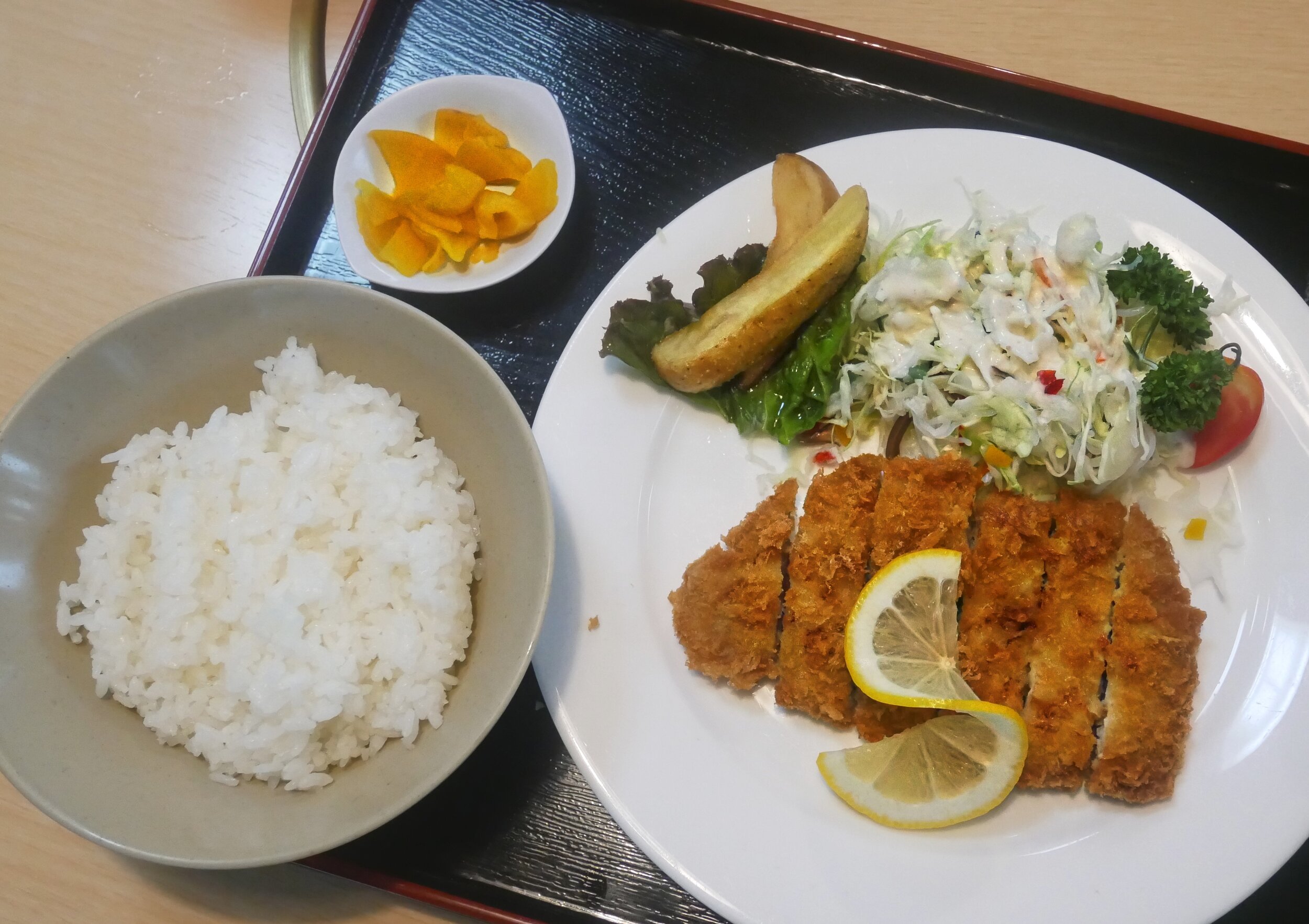Japanese Food
Japanese food is less daunting than it may seem and yet, of all the oriental cuisines we’ve welcomed to the UK over the decades it has, for some reason, managed to retain an air of mystery that makes us think it must be difficult or even impossible to make at home. But when you visit the country you realise that exotic sounding dishes like soba or udon noodles are in fact the kind of thing Japanese lorry drivers consume at truck stops.
Even then, though, such dishes manage to hold on to a sense of magic when you learn that the chef in the steamy truck-stop kitchen has actually spent four years learning to become a udon-master. Which is enough to put any British home-cook off the idea of trying to knock up a bowl of perfect noodles.
This is a nonsense of course because those chefs are making the actual noodles from scratch, which is difficult - but what Japanese home-cooks do is exactly what we can do here: buy a packet of noodles and concentrate on making a delicious sauce.
In fact, what surprised me was just how simple much of the Japanese food really was. Like every other national cuisine in the world, Japan’s most celebrated dishes were, and are, based on bulky, plain tasting, staples topped with a small amount of something delicious. That is how the masses get fed whether you’re talking our potatoes, meat and two veg, pasta in Italy or Dahl in India.
Fabulous noodles in little village restaurant in Hokkaido
So whether the Japanese are cooking with their noodles or sticky rice, the formula will be the same - a big bowlful of the basic staple is made appealing by a comparatively tiny amount of flavoursome flesh, some kind of sauce, or maybe a larger amount of strong tasting but watery stock.
The now famous Japanese ramen is just that: noodles in a strong stock. But by adding a sprinkling of chopped spring onion, a boiled egg or maybe some strips of cooked meat like belly pork, you can take this appetising luncheon dish to another level. Making ramen is not exactly rocket-science, but the secret of a good ramen is all in the stock - and it happens to be my belief that every home-cook should be capable of making a well rounded and delicious broth out of anything from a few beef bones to a chicken carcass.
Cheap lunch in Tokyo - cost about six dollars US
Other variations on that theme in Japan see the noodles being served in a separate bowl, next door to smaller dish filled with a concentrated sauce. With the grey-brown soba noodles made of buckwheat, for example, this will often mean they are served cold on a grid-like bamboo platter which allows drainage, so that you can lift a portion with your chopsticks to dunk into a heated sauce.
This may be served with a third dish of something cooked tempura-style, which basically means deep-fried in a light and crunchy batter. The most common example I saw was a brace of large tempura prawns. All these noodle dishes (and many more besides) will be served with tiny bowls of pickled vegetables.
The overall combo might look impressive neatly arranged on a tray, but it’s all simple stuff. Delicious, but simple. Nowhere near as complex and as mysterious as some European Japanese restaurants would have you believe. Worker food, enjoyed by millions of blue-and-white-collar Japanese at any time of day. And they tuck in with enormous relish. Alarming relish, you could almost say... Because it is deemed polite and even necessary to slurp your noodles loudly because the Japanese believe that aerating each mouthful as it crosses the tongue improves flavour. If you think that’s daft, ask a wine expert. They all do it when they are sampling a glass of plonk.
This lunch in a Hokkaido truck stop cost about seven dollars US
But, given that so many of the Japanese dishes are actually just fuel for workers, it’s worth getting away from tourist hotspots in cities like Tokyo and diving down the backstreets (not perilous in this low-crime country) to find eateries packed with locals.
I did this during my stay in Tokyo, but did have the help of a West Country friend who’s lived in the city for 17 years. Adam Kennedy - once of Milverton - loves the gargantuan city with a relish that is only equalled by his regard for Japanese food. On the first night we walked from the touristy Roppongi area, where I was staying in the quiet haven of the excellent Candeo Hotel, to an area that is popular with local white-collar workers. In a packed but charming little place in the Akasaka government district we ploughed our way through a dozen sharing plates and sank more beer and sake than was good for us - and the bill for this giant feast came to £35 each, which was hardly the painful hit I’d been expecting.
Me and Adam Kennedy on the right of this photo of a night out in Tokyo
The next night we met up with some of Adam’s pals in the more distant north-western quarter of the city where he lives, and again the numerous dishes we ploughed through, plus beers, came to just £20 each. The sharing plates seemed endless - both grilled squid and marinaded pork on skewers, various tempura-style vegetables, salads, various forms of tofu… It was a tapas style meal and by the time we’d finish I couldn’t have eaten another bite.
Earlier in my trip I’d been staying in the northern island of Hokkaido at the beautiful Green Leaf Hotel in the mountain resort of Niseko Village where I was lucky enough to visit the local autumn food fair. You get a different kind of cuisine up north - indeed, the area specialises in growing the Hokkaido potatoes which the Japanese love so much. It is also home to the nation’s dairy farming and you will find various artisan cheese-makers dotted about the beautiful fertile countryside.
A vichyssoise soup which I enjoyed at the neighbouring Hilton Hotel was the best potato broth I have ever tasted. Ever. Indeed, the superb Green Leaf Hotel looked after me very well indeed - and I’ll be writing about that stay in a sceptical travel article.
The food festival, though, came as a surprise because it became obvious that the best powder snow in the world boasted by the local ski-resorts and the not-too-distant surfing beaches had combined to attract a certain type of Westerner. So organic farms and various other artisan food businesses have set up creating the most delicious forms of healthy fodder. The rather jolly food festival reflected this influx.
You can eat very well and healthily indeed in Hokkaido, whether you are visiting local restaurants or finding pop-up eateries at local events. I had one of the best beef burgers that’s come my way in years at Niseko Village.
Niseko Village burger - made from local grass-fed beef
While I was in Japan, numerous people messaged me on Facebook warning of rip-off restaurants, specially in Tokyo. Since returning I’ve heard people on radio say that rugby fans will find themselves taking out second mortgages because Japan is so expensive.
This might be true - but only if they stick to glitzy tourist spots. Away from those - and particularly out in the countryside - you can get a decent lunch for £12.
The Candeo Roppongi Hotel where I was staying in Tokyo had a breakfast that included some 60 dishes - everything from its own massive honeycomb through to extensive chicken stews and curries (which is the sort of thing they like to have for breakfast in Japan), so from the get-go I was hardly in danger of going hungry in that fast and frenetic city.
Breakfast buffet at Candeo Roppongi Hotel
And I needed all the energy I could get to lift my suitcase, which I crammed with basic Japanese ingredients like dashi-stock powder and specialist artisan-made soy-sauces. Such items are expensive if bought online here in the UK, but cheap-as-chips in a Tokyo supermarket.
Now I’ll be able to knock up my own noodles from the Land of the Rising Sun for months to come, certainly all through the Rugby World Cup.
FACT FILE
Martin went to Japan as a guest of YTL Hotels which owns The Green Leaf Hotel in Niseko Village, Hokkaido www.greenleafhotel.com.
While in Tokyo he stayed at The Candeo Hotel Roppongi - visit www.candeohotels.com for more details.





















